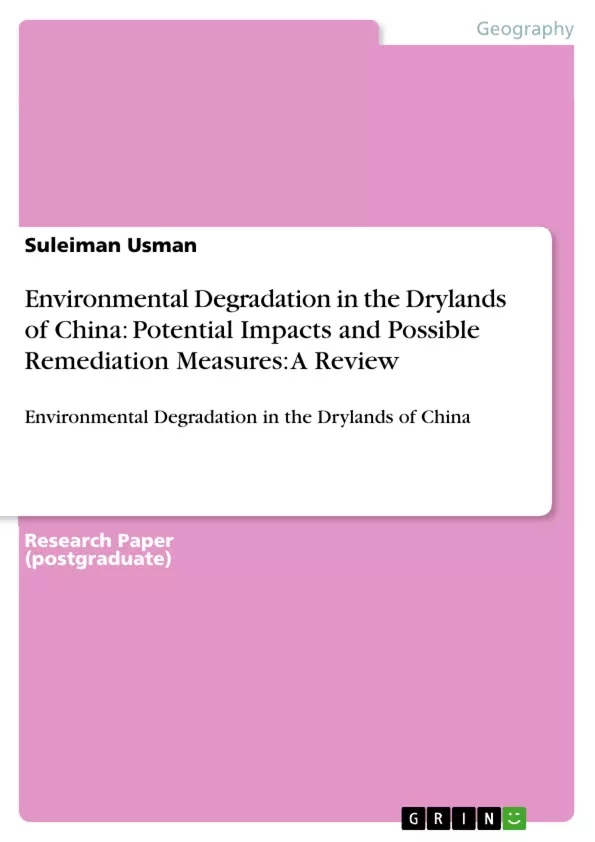China is one of the most affected countries in the world in terms of extent and economic impact of environmental degradation. Desertification is the most severe environmental land degradation problems facing China, commonly caused by wind erosion. Wind erosion occurs widely in arid, semiarid and dry sub-humid zones of northern China, where precipitation is rare and vegetation is sparse. In China desertified land covers an area of 3.3 million km2, accounting for 34% of the total land territory or 79% of the entire arid lands in China. Annual direct economic loss caused by desertification is approximately $6,500,000,000. The best way to control this problem in China are: (1) rehabilitation of tree plantation for complete desertification control, (2) improvement of the economic development system through: (i) economize in the use of resources; (ii) moderate exploitation of the resources; and (iii) environmental protection; and (3) providing measures that should be suited to local conditions such as irrigation system and forage farming system.
Inhaltsverzeichnis (Table of Contents)
- ABSTRACT
- INTRODUCTION
- Geography of the study area
- Extent of land degradation in China
- POTENTIAL IMPACT OF LAND DEGRADATION IN CHINA
- Impact of desertification on soil environment
- Impact of soil erosion on crops
Zielsetzung und Themenschwerpunkte (Objectives and Key Themes)
This paper provides an overview of environmental degradation in China, focusing primarily on desertification and its impacts. The author aims to shed light on the potential impacts of these problems and explore possible remediation measures.
- Desertification and its impact on soil environment in China
- Soil erosion caused by wind and its consequences for crops
- The extent and economic impact of land degradation in China
- Human activities as a major contributor to land degradation
- Potential remediation measures for tackling desertification and soil erosion
Zusammenfassung der Kapitel (Chapter Summaries)
- The Introduction section outlines the severity of environmental degradation in China, particularly focusing on desertification and its impact on agricultural sustainability.
- The Geography of the study area section provides a brief overview of China's geography and climate, highlighting the challenges posed by its vast territory and diverse terrain.
- The Extent of land degradation in China section explores the extent and consequences of land degradation in China, including the increasing frequency of severe dust storms.
- The Impact of desertification on soil environment section delves into the detrimental effects of desertification on soil quality, fertility, and agricultural productivity.
- The Impact of soil erosion on crops section discusses the impact of wind erosion on soil health and its implications for crop production, including reduced nutrient availability and water infiltration rates.
Schlüsselwörter (Keywords)
The primary keywords and focus topics of this text revolve around land degradation, desertification, wind erosion, soil erosion, agricultural productivity, environmental impact, remediation measures, and sustainable development in the drylands of China.
- Citation du texte
- PhD Student Suleiman Usman (Auteur), 2007, Environmental Degradation in the Drylands of China: Potential Impacts and Possible Remediation Measures: A Review, Munich, GRIN Verlag, https://www.grin.com/document/175037



